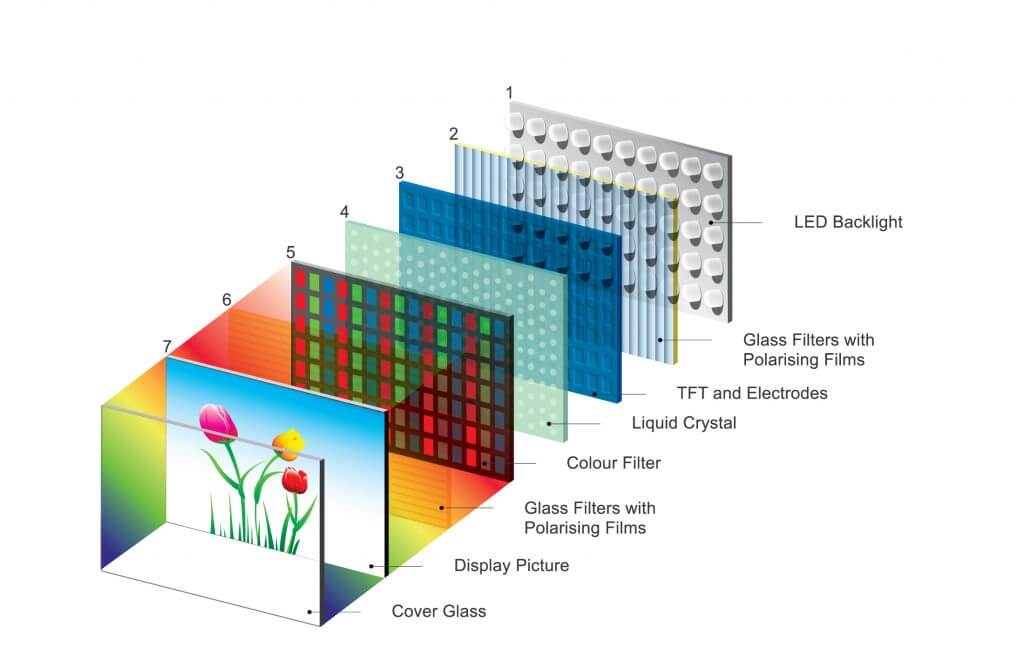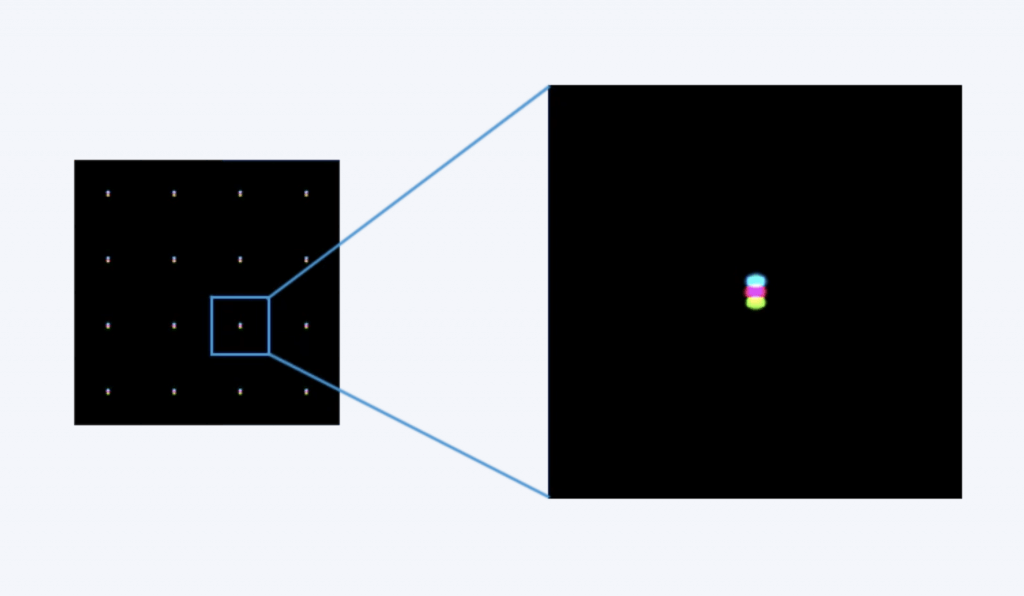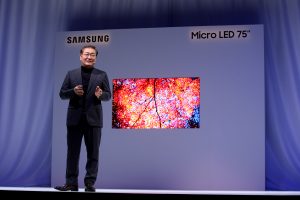Micro LED – Display Tech of the Future?
Micro LED has all the advantages of OLED and the advantages of LED-LCD without their disadvantages. Sounds too good to be true? We’ll take a closer look and answer the question why Micro LED hasn’t really arrived in home cinema yet and is still a dream of the future.
Micro LED Technology
In Comparison: LCD and OLED
At the beginning I would like to talk about LCD and OLED technology. LCD TVs have an LED backlight, which can be partially blocked by the LCD layer. Per pixel there are usually 3 subpixels in the colors red, blue and green. This results in different colours at different brightness levels.
With OLEDs, on the other hand, each sub-pixel emits light by itself. To increase the brightness there is a white subpixel in addition to the red, green and blue subpixel. Thus, almost perfect black and a theoretically infinite contrast (actually rather 1,000,000:1) can be achieved. The problem is that the pixels, especially when they get too warm, have a limited life span. The problem here are the eponymous organic molecules. Therefore the picture has to be dimmed for large bright scenes, otherwise it gets too hot. With better heat management you can get a little bit more out of it, but it still remains limited.

The Idea of Micro LED
The idea of Micro LED is actually super simple. Instead of organic LEDs one uses inorganic LEDs, more precisely LEDs made of gallium nitride. These can become much brighter without getting too hot and need less energy for the same brightness. That’s why MicroLED displays only use red, green and blue subpixels, which in turn results in better color accuracy.

Even better is that the Micro LED Displays are modular, meaning that several small, borderless tiles can theoretically be combined in any way. But this is not only because you want to satisfy your customers. But there is more to it than that.
So you have almost perfect black and infinite contrast like OLEDs, but also brightness and lifetime like LED-LCDs.
So far so good, that really doesn’t sound very complicated.
Problems in production
Unfortunately, it’s not quite that simple. To achieve a UHD resolution, 24,883,200 subpixels or individual LEDs (3,840×2,160×3=24,883,200) are required. The individual tiles usually have a much lower resolution of 960×540 pixels, for example, and these in turn consist of 12 modules with 240×180 pixels. But that’s still 129,600 single LEDs per module. And these modules cannot really be produced in mass production processes yet. Samsung calls the production of The Wall Luxury suitable for the mass market, but that’s more of a marketing talk. The OLED displays in comparison are printed, which makes mass production much easier.
But the biggest problem is the size of the LEDs. Because of course it looks impressive when a company like Samsung shows a 292 inch version of “The Wall” at a trade show. But it is much more difficult to realize the “smaller” sizes. Because the problem is the size of the pixels or the distance between two neighbouring pixel centres (pixel pitch). If this is too small, new problems with the technology arise. At 292 inches with 8K resolution, the pixel pitch is 0.84mm. But if you want 4K-resolution in 75 inch, the pixel pitch is 0.43mm.
And with such a small distance it becomes difficult with the black level and contrast ratio. Because the display has to be black between the individual pixels to swallow light, and at some point there’s barely enough space for that. That’s why Samsung also offers the “Black-Seal” technology. What sounds really cool is actually just a dark coating on the whole display. This also causes more reflections on the display, which reduces the perfect viewing angle a bit.
That’s why Sony, for example, advertises the Crystal LED with the fact that the LEDs are only 0.003mm² per pixel, so the rest of the surface, which is 99%, is black. But this is only possible with an even bigger pixel pitch of 1.26mm…

Which companies are making Micro LED?
In addition to industry leader Samsung, which sells its Micro LED modules under the name “The Wall”, similar or identical approaches are also available from other manufacturers. Also LG, Sony and Apple are researching the technology. Sony even already has the Crystal LED on the market, at least for business customers. There are also a number of other, less well-known companies that are trying to implement the technology.
Micro LED is already available
To be correct, it is already possible to install a Micro LED at home. For example, you can already put together the entertainment version of “The Wall” for home cinema. However, you will have to pay a lot of money for this. And for the time being, the focus is still on real business customers, because there are many more serious prospective customers who are willing to spend so much money.

When can we expect real Micro LED TVs?
The first real Micro LED TV for home would not have to wait too long. Samsung presented a prototype with 4K resolution in 75 inch at the CES earlier this year. Certainly, the problems with production and therefore the costs will continue to decrease.

But the decisive question is whether the other technologies will not catch up. After all, in addition to OLEDs, the first Dual LCD TVs are also coming onto the market, and they could be significantly cheaper than micro LED TVs much faster. Dual LCD TVs are also very promising. The technology, which is already used by Sony and Panasonic reference monitors, is based on two LCD layers in front of each other. One LCD layer is, so to speak, the color filter and a second LCD layer takes care of the black barrier, i.e. the brightness. With ULED XD, Hisense is even relatively close to being ready for the mass market.
This means that Micro LED is not the one technology you can look forward to, but has to stand its ground in the fight against dual LCD and the ever cheaper OLEDs.
Mini LED – Micro LED: The same with a different name?
Since CES 2021, TVs with Mini LED technology have been the talk of the town, as Mini LED models will be launched by many different manufacturers in 2021.
What initially sounds quite similar to Micro LED is a fundamentally different technology, which can rather be seen as an improvement of conventional LED LCD TVs.
The LEDs in the backlight of LED LCD TVs are massively reduced in size, allowing more LEDs to be accommodated within it. This allows for more precise control of the lighting, which can reduce some of the negative effects. If you’re interested in the 2021 Mini LED models, we’ve already written an article for you about the small LEDs.
In this one, we also address whether these TVs could be a threat to the brilliant picture quality of OLED TVs, or if they will continue to be the lone leader of high-end home theater TVs.



